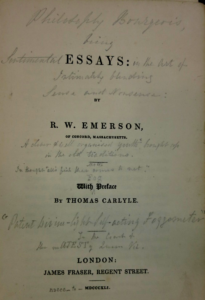On Monday, April 23rd, a 25-year old man named Alek Minassian drove a rented van down a sidewalk in Toronto, killing eight women and two men. The attack was reminiscent of recent Islamist terror attacks in New York, London, Stockholm, Nice, and Berlin. Just before his massacre, he posted a note on Facebook announcing: “Private (Recruit) Minassian Infantry 00010, wishing to speak to Sgt 4chan please. C23249161, the Incel Rebellion has already begun! We will overthrow all the Chads and Stacys! All hail the Supreme Gentleman Elliot Rodger!”
Anders Wallace has published an essay in 3 Quarks Daily on Incels, Pickup Artists, and the World of Men’s Seduction Training that starts with the recent attack in Toronto by a self-styled “incel” Minassian who adapted a terror tactic and moves on to seduction training. Wallace has been participated in seduction training and immersed himself in the “manosphere” which he defines thus:
The manosphere is a digital ecosystem of blogs, podcasts, online forums, and hidden groups on sites like Facebook and Tumblr. Here you’ll find a motley crew of men’s rights activists, white supremacists, conspiracy theorists, angry divorcees, disgruntled dads, male victims of abuse, self-improvement junkies, bodybuilders, bored gamers, alt-righters, pickup artists, and alienated teenagers. What they share is a vicious response to feminists (often dubbed “feminazis”) and so-called “social justice warriors.” They blame their anger on identity politics, affirmative action, and the neoliberal state, which they perceive are compromising equality and oppressing their own free speech.
The essay doesn’t provide easy answers though one can find temptations (like the idea that these incels are men who were undermothered), instead it nicely surveys the loose network of ideas, resentments and desires that animate the manosphere. What stands out is the lack of alternative models of heterosexual masculinity. Too many of the mainstream role models we are presented with (from sports to media role models to superheros) reinforce characteristics incels want training in from stoicism to aggression.
